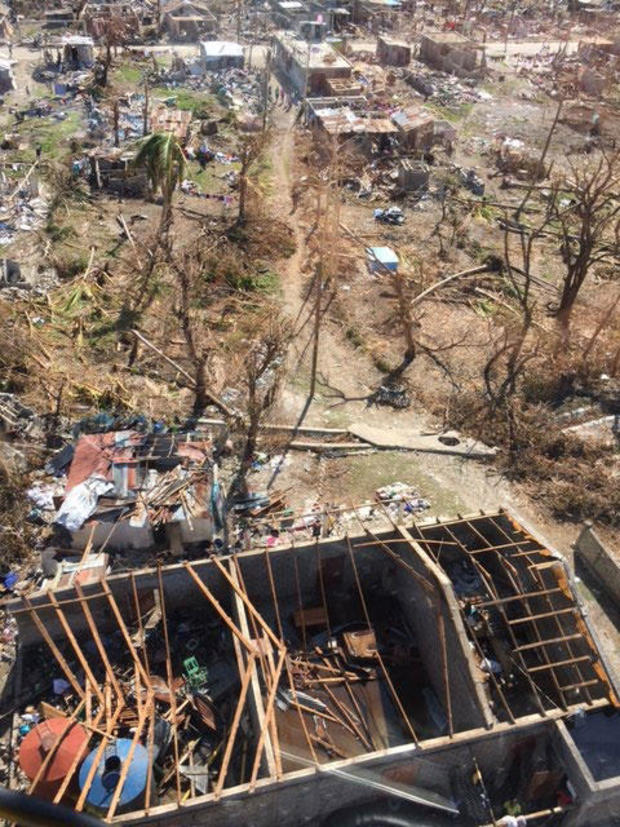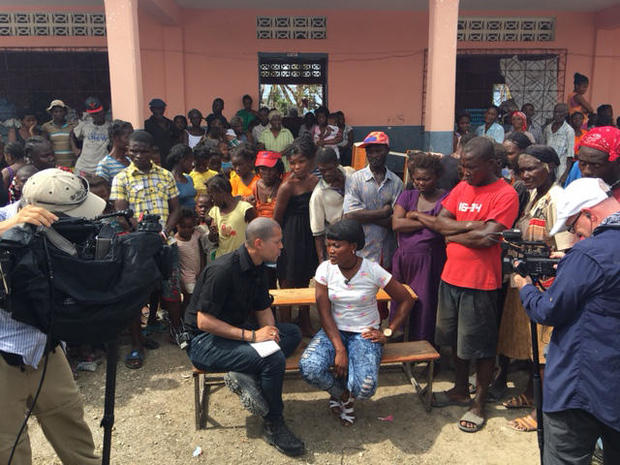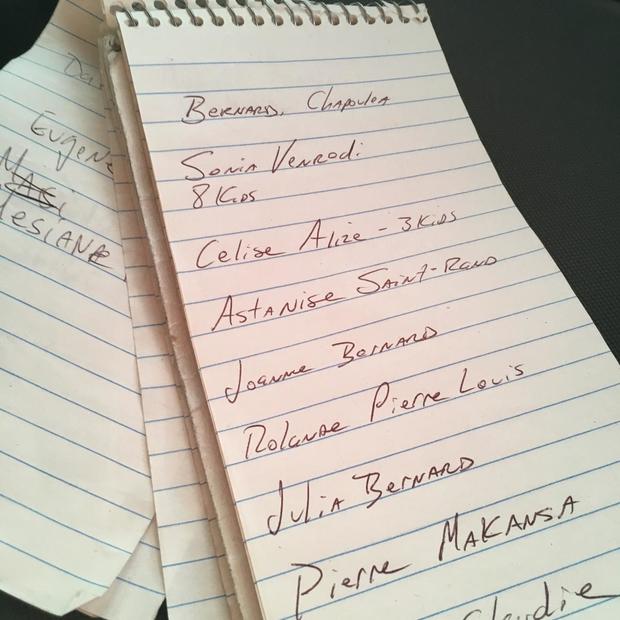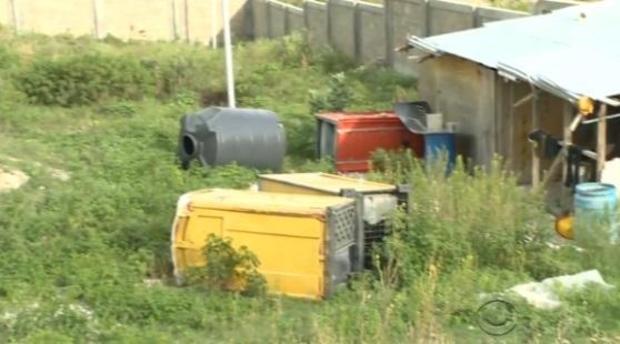Reporter's notebook: Returning to Haiti after another tragedy
HAITI This weekend, U.N. Secretary General Ban Ki-moon visited victims of Hurricane Matthew in Haiti. There were clashes before his arrival.
Haitians are frustrated that aid has been slow to arrive since the storm hit more than a week ago. Thousands of homes were destroyed. Nearly 550 people are dead.
Hurricane Matthew left misery behind.
We’ve spent the last week in Haiti covering the aftermath of Hurricane Matthew.
When we boarded our flight from New York City to Port-au-Prince, I expected it to be crammed with other journalists and NGO workers. But it was practically empty. There is so much going on in the world these days, I am sure there’s “Haiti fatigue” that has set in. Haiti is always in trouble, always suffering, always miserable. Don’t think that people here don’t know that. They know people are tired of hearing about their misery. They are tired of living with it.
Almost seven years ago, I was here less than 24 hours after this nation was rocked by an earthquake in 2010. I’ve been back several times since -- always because of a tragedy.
This time was no different. The capital Port-au-Prince was spared -- but towns on the island’s southern coast like Jeremie were leveled.
When we arrived in Jeremie, it wasn’t hard to see why so many homes were wiped out and so many were killed.
All of the roofs of the people on the country side are made of tin. And there is no way that tin is going to hold up in the face of 145 mph winds.
Astaniece Saint Erand told me they have nothing left – no food or water.
We met Elie Sadette, who described how most people knew the storm was coming, but had no idea how severe it would be.
Jeff Genty showed us what was left of his home. His home was practically destroyed.
Celise Alize has three children. They lived through the storm -- now she wonders if they’ll survive the aftermath.
She held up and showed us a breadfruit. It’s all they have to eat right now.
Everybody gave me their names.They just want the world to know what’s going on here. And I think that they feel that by giving me their names, we won’t forget them.
The next day we took a helicopter to Port-à-Piment. My producer T. Sean Herbert and photojournalist Fred Weil were experienced journalists who had reported from Haiti before and from other crisis zones around the world. I could see the shock in their eyes. From the air it looks like it was hit with a bomb.
People in Haiti told us that they don’t have water, clothes, homes. They can’t find food to eat.
A lot of people were killed in this community when the tins roofs sliced open people’s necks.
Now the big fear is Cholera. The last outbreak killed at least 10,000.
They have been treating over 100 people, and so far, not one person has died, Jean Daniel Laguerre with Doctors Without Borders said.
It’s a small victory, but there are reminders that in Haiti, death is never far away. We smelt a lot of bleach, which is a good thing because bleach is important to prevent the spread of cholera, but the other thing I’m reminded of is the earthquake of Haiti, where the smell of death was all around.
The U.S. military is assisting the Haitian police in bringing in crucial supplies to the hardest hit areas. Our digital journalist Alex Pena spent several days reporting on their efforts. But many here say it’s just a band-aid.
Almost seven years ago I was in Ti Anyan, where tens of thousands of quake victims were unceremoniously buried in mass graves.
On this sacred ground, there are now overturned Porta Potties. It breaks my heart to see what we are seeing here. Everyone should be ashamed.
As we were leaving we met some kids sitting on the sun baked rocky soil.
One of them told us he wants to be a journalist. Another a doctor, another an engineer.
They are full of hope.
I would like to share in their hope. But I’ve been back here too many times.




